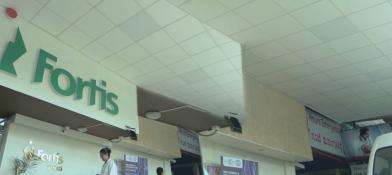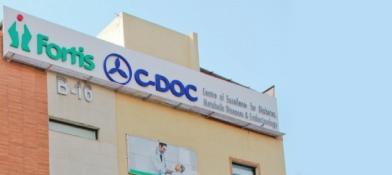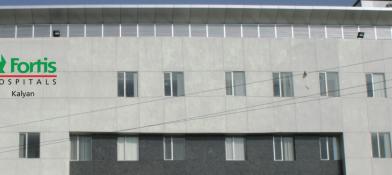Botox Injections: A Guide to Cosmetic and Therapeutic Uses
Botox is the brand name for a purified protein derived from Botulinum toxin type A, which is used in a non-surgical cosmetic and therapeutic procedure to temporarily relax targeted muscles. In the field of aesthetic medicine, Botox injections are a globally renowned and highly effective treatment for smoothing dynamic wrinkles, which are the lines and creases formed by repetitive facial expressions like frowning, squinting, and raising the eyebrows.
By precisely relaxing the underlying muscles responsible for these movements, Botox creates a smoother, more refreshed, and naturally youthful appearance. It is a testament to the precision of modern medicine that a substance, when used in minute, controlled doses by a qualified medical professional, can achieve such refined and predictable results.
Beyond its celebrated cosmetic applications, Botox is also a powerful therapeutic agent approved for treating a wide array of medical conditions. Its ability to block nerve signals makes it an effective treatment for chronic migraines, excessive sweating (hyperhidrosis), certain muscle spasm disorders like cervical dystonia and blepharospasm, and even overactive bladder. At Fortis Healthcare, all Botox procedures are performed by board-certified dermatologists and plastic surgeons with a deep understanding of facial anatomy and physiology, ensuring that every treatment is tailored to the individual's needs to achieve safe, effective, and natural-looking results, whether the goal is aesthetic enhancement or therapeutic relief.
The Science: How Botox Injections Work
To understand the efficacy of Botox, it is essential to understand the basic science of how our muscles contract. The entire process hinges on a chemical messenger, a neurotransmitter called acetylcholine.
The Neuromuscular Junction: Where Nerve Meets Muscle
Every muscle contraction begins with a signal from a nerve. The point where the nerve ending meets the muscle fiber is called the neuromuscular junction. It is not a direct physical connection but a microscopic gap.
- Nerve Signal: When you decide to make a facial expression, your brain sends an electrical signal down a nerve.
- Acetylcholine Release: When this signal reaches the nerve ending, it triggers the release of acetylcholine into the gap between the nerve and the muscle.
- Muscle Contraction: Acetylcholine then binds to specific receptors on the muscle fiber, which acts as a key in a lock. This binding signals the muscle to contract, causing the overlying skin to fold and create a wrinkle.
Botox's Mechanism of Action
Botox works by temporarily interrupting this communication process. When injected in tiny, targeted doses into a specific muscle, the Botox protein binds to the nerve endings. It then acts to block the release of acetylcholine. Without this chemical messenger, the nerve can still send its signal, but the muscle cannot receive the instruction to contract. The muscle remains in a relaxed state.
This targeted muscle relaxation is the key to Botox's cosmetic effect. When the underlying muscle that causes a wrinkle is relaxed, the overlying skin is given a chance to smooth out. This is why Botox is exceptionally effective on dynamic wrinkles, the lines that are formed by movement. It does not work on static wrinkles, which are lines and folds present in the skin even when the face is at rest, typically caused by sun damage and loss of collagen. Static wrinkles are better treated with dermal fillers, laser resurfacing, or other procedures.
Cosmetic Applications of Botox
Botox is most widely used for aesthetic rejuvenation of the upper face, where dynamic wrinkles are most prominent. All treatments are customized to the individual's facial anatomy and desired outcome.
Forehead and Brow Area
- Glabellar Lines: These are the vertical "11" lines that appear between the eyebrows when you frown or concentrate. Treating the corrugator and procerus muscles here can create a more serene and relaxed expression.
- Horizontal Forehead Lines: These lines run across the forehead and are caused by the frontalis muscle when you raise your eyebrows in surprise. Careful treatment can smooth these lines without causing an unnatural "frozen" look.
- Non-Surgical Brow Lift: By precisely relaxing the muscles that pull the eyebrows down, Botox can create a subtle lift in the brow arch, opening up the eyes and creating a more refreshed appearance.
Eye Area
- Crow's Feet (Lateral Canthal Lines): These are the fine lines that radiate from the outer corners of the eyes, caused by smiling and squinting. Treating the orbicularis oculi muscle here can soften these lines significantly.
Advanced Cosmetic Uses
In the hands of an experienced injector, Botox can be used for more advanced facial sculpting:
- Bunny Lines: The small, diagonal wrinkles that appear on the sides of the nose when you scrunch it.
- "Gummy" Smile: For individuals whose upper lip elevates excessively when they smile, exposing a large portion of their gums. A small amount of Botox can relax the lip elevator muscles for a more balanced smile.
- Jawline Slimming (Masseter Reduction): For patients with a wide or square jaw due to overactive masseter (chewing) muscles, Botox can be used to relax these muscles, resulting in a slimmer, more heart-shaped facial contour.
Therapeutic (Medical) Applications of Botox
The muscle-relaxing properties of Botox make it a valuable treatment for a range of non-cosmetic, medical conditions.
- Chronic Migraine: For patients who suffer from 15 or more headache days per month, Botox is an approved preventive treatment. It is administered via a series of small injections into specific points on the head and neck every 12 weeks and is thought to work by blocking pain signals.
- Hyperhidrosis (Excessive Sweating): For severe underarm, palmar (hand), or plantar (foot) sweating that is not controlled by topical treatments. Botox works by blocking the nerve signals that stimulate the sweat glands. The results can be dramatic and last for six to twelve months.
- Cervical Dystonia: A painful neurological disorder where neck muscles contract involuntarily, causing the head to twist or turn into an abnormal position. Botox injections into the affected muscles can relieve these spasms and improve head posture.
- Blepharospasm: A condition of uncontrollable blinking or spasming of the eyelid muscles. Botox provides significant relief by relaxing these overactive muscles.
- Spasticity: To reduce muscle stiffness and spasms in conditions like cerebral palsy, post-stroke spasticity, or multiple sclerosis.
When are Botox Injections Recommended? (Candidacy)
You may be a good candidate for Botox if you are looking to address dynamic wrinkles or have one of the medical conditions for which it is an approved treatment. An ideal candidate:
- Is in good general health.
- Is not pregnant or breastfeeding.
- Does not have a neuromuscular disorder (like myasthenia gravis or Lambert-Eaton syndrome).
- Has realistic expectations about the outcome of the procedure.
A detailed consultation with a qualified doctor is the only way to determine if Botox is the right and safe option for you.
Our Specialists
The safety and success of a Botox treatment depend entirely on the skill, knowledge, and artistic eye of the injector. It requires a deep understanding of facial anatomy and muscular dynamics. Our team consists of board-certified dermatologists and plastic surgeons who are experts in facial aesthetics.
- Dr. Rashmi Taneja: Director, Plastic & Reconstructive Surgery, Fortis Memorial Research Institute, Gurugram
- Dr. Sachin Dhawan: Senior Consultant, Dermatology, Fortis Memorial Research Institute, Gurugram
- Dr. Ajaya Kashyap: Senior Consultant, Plastic, Aesthetic & Reconstructive Surgery, Fortis Escorts Hospital, Okhla, New Delhi
Patient Stories
"I'm a very expressive person, and over the years I had developed very deep frown lines between my eyebrows that made me look angry or worried all the time. I decided to try Botox. The procedure was so quick, just a few tiny pinpricks. Within a week, the lines had softened dramatically. The best part is that I don't look frozen; I just look like a more rested version of myself. It's been a huge boost to my confidence." - Meera Joshi, 42, Gurugram
"I suffered from chronic migraines for years. The pain would be debilitating, forcing me to miss work and family events. My neurologist at Fortis suggested therapeutic Botox as a preventive treatment. The series of injections every three months has been life-changing. I've gone from having 15-20 headache days a month to just four or five mild ones. It hasn't cured my migraines, but it has given me control over my life again, and that is priceless." - Rohan Batra, 38, Delhi
The Botox Procedure: A Detailed Walkthrough
A Botox treatment is a quick and straightforward office-based procedure.
The Consultation
This is the most important part of the process. Your doctor will:
- Discuss your goals and concerns in detail.
- Conduct a thorough medical history review.
- Perform a dynamic facial assessment, asking you to frown, smile, and raise your eyebrows to evaluate your unique muscle movement and wrinkle patterns.
- Explain the procedure, the expected results, potential side effects, and provide you with a clear treatment plan and cost.
Preparing for Your Injection
- You should avoid alcohol for at least 24 hours before the treatment.
- To minimize the risk of bruising, it is advisable to stop taking blood-thinning medications and supplements like aspirin, ibuprofen, fish oil, and vitamin E for about a week prior to your appointment, but only after consulting with your primary doctor.
What Happens During the Treatment (Typically 10-15 minutes)
- Cleansing and Marking: The treatment areas will be thoroughly cleansed. The doctor may ask you to animate your facial muscles again so they can mark the precise injection points with a sterile pen.
- The Injections: The doctor will use a very fine, short needle (similar to an insulin needle) to inject tiny amounts of Botox into the targeted muscles. You will feel a series of small, quick pinpricks. The discomfort is minimal and very brief. No anesthesia is typically required, though a topical numbing cream or ice pack can be used if you are concerned.
- Completion: After the injections, the area is cleaned again, and you are given your post-treatment instructions.
After the Procedure: What to Expect
There is virtually no downtime after a Botox treatment.
- Immediate Aftercare: You will be advised to keep your head upright for about four hours and to avoid rubbing or massaging the treated areas for 24 hours. This prevents the Botox from migrating to unintended muscles. You should also avoid strenuous exercise, saunas, and facials on the day of the treatment.
- Results Timeline: The effects of Botox are not immediate. You will start to notice a gradual softening of the treated lines in about 3 to 5 days. The maximum, final result is typically seen at around two weeks.
- Longevity: The muscle-relaxing effects of a cosmetic Botox treatment typically last for three to four months. As the nerve endings slowly regenerate, the muscle action will gradually return, and the lines will reappear. To maintain the results, you will need to have repeat treatments. Many patients find that with regular treatments, the effects may start to last longer.
Myths vs Facts
Take the Next Step
Whether you are looking to soften the lines of time for a more youthful appearance or seeking relief from a debilitating medical condition, Botox offers a safe, effective, and minimally invasive solution in the hands of a qualified expert.
The key to a successful outcome is a personalized treatment plan based on a thorough understanding of your unique anatomy and goals. If you are considering Botox, a one-on-one consultation with a board-certified dermatologist or plastic surgeon is the essential first step to determine if it is the right choice for you.
CTA: Book a Consultation / Ask a Question
Frequently Asked Questions
Q1. How long does the Botox procedure take?
Ans. The injection part of the procedure is very quick, typically taking only about 10 to 15 minutes. Your total appointment time, including the consultation and preparation, will be longer.
Q2. Are Botox injections painful?
Ans. The discomfort is minimal. The needle used is extremely fine, and the sensation is often described as a series of tiny pinpricks. The procedure is very well-tolerated by most patients without the need for any anesthesia.
Q3. When will I see the results from my Botox treatment?
Ans. The results are not immediate. You will typically begin to see a softening of the wrinkles within 3 to 5 days, with the full, final effect becoming apparent at around the 14-day mark.
Q4. How long do the effects of Botox last?
Ans. For cosmetic use, the muscle-relaxing effects generally last for three to four months. For therapeutic uses like hyperhidrosis, the effects can last much longer, often six months or more. The duration can vary based on your metabolism, the area treated, and the dosage used.
Q5. What are the potential side effects of Botox?
Ans. The most common side effects are mild, temporary, and localized to the injection site, such as slight bruising, redness, or swelling. A mild headache can also occur. More serious but rare side effects, like a temporary drooping of the eyelid (ptosis), are related to the technique and are why it is crucial to see an expert injector.
Q6. Is there any downtime after Botox?
Ans. No, there is no real downtime. You can return to your normal daily activities, including work, immediately after the procedure. You will just need to follow the simple aftercare instructions, such as avoiding strenuous exercise for the rest of the day.
Q7. Can Botox be combined with other treatments like dermal fillers?
Ans. Yes, absolutely. Botox is very frequently combined with dermal fillers for a comprehensive facial rejuvenation treatment sometimes referred to as a "liquid facelift." Botox addresses the dynamic wrinkles caused by muscle movement, while fillers are used to restore lost volume, fill in static wrinkles, and contour the face.
Q8. What is the difference between Botox and Dysport?
Ans. Botox and Dysport are both brand names for botulinum toxin type A. They have the same mechanism of action. There are subtle differences in their molecular structure and how they are prepared, which can lead to slight variations in how they spread and their onset of action. Your doctor will choose the product they believe is best suited for your specific needs.




































